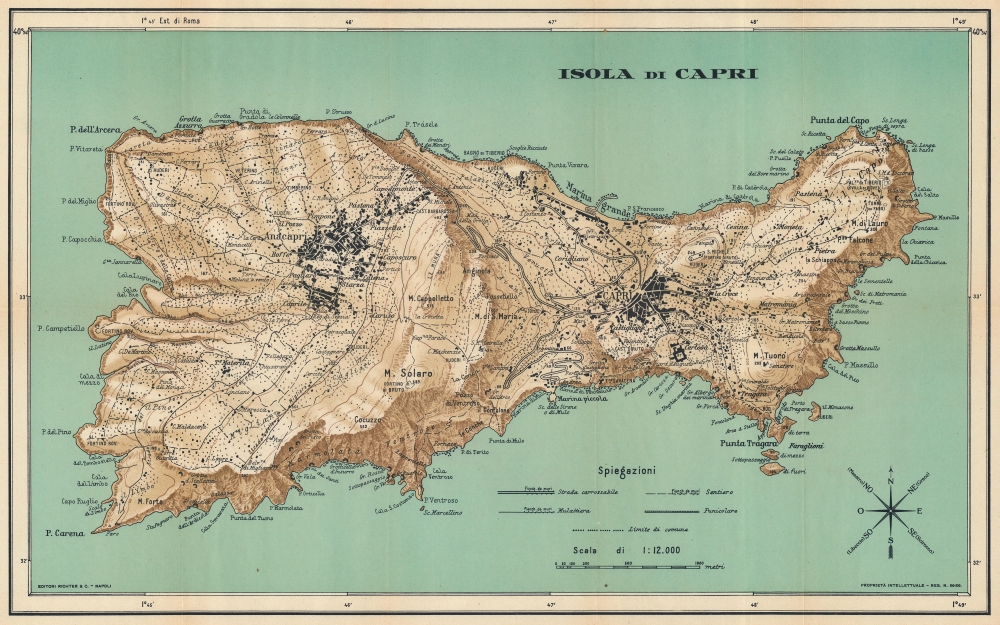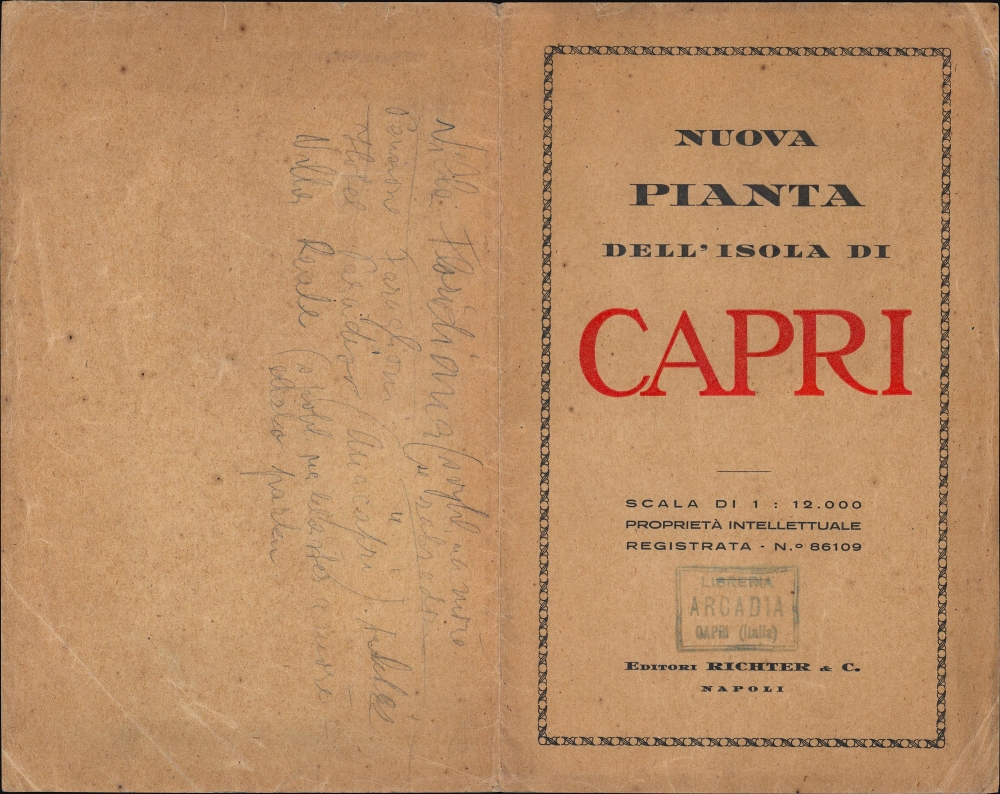This item has been sold, but you can get on the Waitlist to be notified if another example becomes available, or purchase a digital scan.
1930 Editori Richter Tourist Map of Capri
IsolaCapri-richter-1930
Title
1930 (undated) 14 x 22.5 in (35.56 x 57.15 cm) 1 : 12000
Description
A Closer Look
Both Capri and Anacapri appear in detail. Outside these two cities, villas and estates are referenced by name. The funicular from the grand marina to Capri is illustrated, as are the island's roads and marinas. Numerous coastal caves are identified. Contour lines emphasize topography.Capri as a Tourist Resort
The 1838 novel Entdeckung der blauen Grotte auf der Insel Capri ('Discovery of the Blue Grotto on the Isle of Capri') by August Kopish sparked the European fascination with Capri. By the late 19th century, the island had become an escape for Europe's writers, artists, and other notable individuals, many of whom purchased villas there. John Singer Sargent, Claude Debussy, and Frank Hyde are among those who created work on or about the island. Being socially progressive, Capri also became a haven for gay and lesbian life.Publication History and Census
This map was created and published c. 1930 by Editori Richter in Naples (Napoli). We note a single cataloged example in OCLC, at the Freie Universtät Berlin. The present example bears a stamp of the Capri's Libreria Arcadia, likely the original seller.Cartographer
Richter and Company (1842 – 1930) were Neapolitan publishers of maps and travel posters most active in the latter part of the 19th and early 20th centuries. The firm was founded in 1842 by Richter, a Swiss typographer and chromolithographer who immigrated to Naples shortly before opening the firm. Following the unification of Italy, he became the official printer of the government, producing various graphic works including currency. Later, in the 1880s, they began to produce promotional material, including the occasional map, for hotels. The company received a boost when they hired Mario Borgoni as their chief artistic director. Inspired by the art nouveau movement, Borgoni began expanding the hotel printing business into various hotel labels and posters, for which they are best known today. Borgoni's iconic posters and baggage labels, drawn for the finest hotels all over the world, are today highly coveted by ephemera and poster collectors. When the New York stock market crash of 1929 devastated the European hospitality industry, Borgoni left the company and they closed their doors in 1930. More by this mapmaker...




